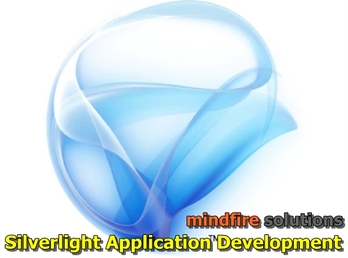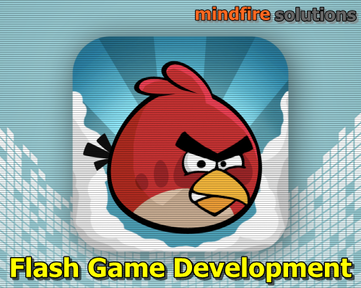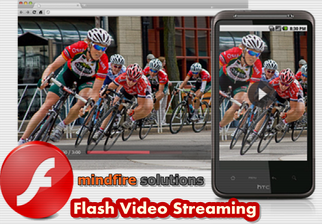Adobe AIR technologies are very good to build rich applications. At Mindfire we have been working in Adobe AIR skills for a long time now. Over the years we have accumulated a lot of knowledge in the technologies involved in developing rich internet applications. The best and the easiest way for technical people like us to understand whether a technology is really useful for developing an application or not is to see a demo of the application that has been built using it. Since I cannot share a video demo in this article, what I will do is explain in words what the client need was and how the Flash-AIR team at Mindfire addressed it. I hope it would be a useful read for you. Customer need – what the client wanted to build? The client is a leading Real Estate Touch Screen Software & Hardware solutions provider for real estate professionals, looking to gain the competitive edge in saturated markets. In this case client wanted to create an Adobe AIR interface capable of running in touch screen devices, iPad & Android platforms along with web interface, which users can use to browse through to check different properties based on their need. Once they find a suitable property they can then send enquires. Solution provided by Mindfire We prepared a plan of action & discussed our idea with the client. Client was very pleased with the approach we came up with and gave us the go ahead to get it done. Our approach is described below. We designed and implemented an Adobe Air application development for touch screen devices including iPad, iPhone & Android platforms. The application allows real estate agencies to display their properties in a slick rich user interface which supports touch gestures. The application allows the admin to configure the MLS listing URL which is then submitted to a Drupal system that extracts & feeds property data to the application. We used AMF/Remoting for speedy data exchange between the application and the server. Implemented an interactive gallery to display property details & images. Implemented swipe gesture for touch. Implemented & interfaced with google maps api to display property location on google map. Implemented email sending feature to allow a user to click & quickly send email with property details to friends. Key features of the application are: - Interactive gallery displaying the property images and image slider.
- Map view shows the location of the property.
- Search view shows all the search results according to the user requirements.
- Email view allows the user to send email & sms to the contractor.
We have done a host of Adobe AIR projects and in all cases clients were very happy with the final product that was built and delivered. You can click here to have a look at some of the other projects developed by us. To know more about our expertise in Flash application development services and to outsource custom flash development company for your Flash application development requirements, please contact us at sales[at]mindfiresolutions[dot]com or call 1-248-686-1424. We will be glad to help you.
 Ever wondered what makes Silverlight Out-of-browser (OOB) applications ideal for better Line-of-business (LOB) development? Here is the reason why.
It is a well known fact that Silverlight-based applications typically run within Web pages. However, Silverlight-3 onwards also renders the viable feature of having an option for having OOB applications wherein users able to install those applications from the Web and run them outside the browser. These applications can be configured accordingly so that users can install them from their host Web pages and subsequently run them outside the browser.
It is possible for an OOB application to run without a network connection. In case you have an application which normally uses network-based resources, then with Silverlight it is very well feasible for you to implement network detection and hence provide offline support as and when an online connection is not available. In such a case for instance, an isolated storage can be used as an offline repository which can later i.e. when the connection resumes, synchronize with a server-based data store. At the same time when a connection is available, one can also check for application updates. An OOB application can also be configured in a manner to require elevated trust. The advantage of using trusted applications is that they can help bypass some of the restrictions of the security sandbox. This is evident from the fact that trusted applications can operate in full-screen mode without keyboard restrictions. As your trusted technology partner, Mindfire Solutions will help you build excellent Out-of-Browser applications that perfectly suit your business needs. Whether you operate in the Media and Entertainment domain or Insurance, Stock market, Sports or Banking, our expert Silverlight developers at Mindfire Solutions are capable of undertaking a project of any complexity to perfectly meet your software development needs.
While Silverlight-3 OOB apps allow any Silverlight application to have a desktop shortcut, and does not require the support of a browser to run the app, Silverlight-4 on the other hand allows elevated privileges to its user. Silverlight-4 enables the app to access local resources which can include a network stack or a file system. The reason why Silverlight Out-of-Browser applications are one of the foremost choices for Line-of-Business application development is the fact that it perfectly suitable from an end-user perspective who are more comfortable with a desktop application, would not like to leave the Silverlight sandbox application for accessing the filesystem and would like an application that will be executed even when it is has worked upon in offline mode.
Silverlight-5 with its range of brand new features has enabled end users do all the things mentioned above without any hassles. Mindfire Solutions as your Silverlight application development partner is able to correctly identify your business needs to develop custom made application software that complements your business requirements. Hire our expert Silverlight developers to gain access to an unmatched talented pool of developers who have executed more than 20 projects in the past 5 years and have an average experience of more than 2 years.
If you are looking for expert hands to successfully execute your Silverlight Software development project, then look no further than Mindfire Solutions. If you are in need of Silverlight programmers who have great experience in developing Silverlight applications to execute your silverlight development services efficiently then look no further than Mindfire Solutions, your trusted Silverlight partner.
 Online gaming industry has been growing exponentially since the 90s when it became very popular. As of 2011 the worldwide online gaming revenue was around $11-12 billion dollars, which shows how serious a business it is. Lot of companies is into developing online games and the easiest and preferred technology used for building games is Flash. We at Mindfire have been involved in games development for a long time now. The online game development team at Mindfire has developed a wide variety of Flash based games.
Given below is a small write up on 2 basic areas of game development – Key components required in a game AND basic game development workflow.
Key components required in a game
The following are a few key components required in a game:
Input: Input refers to how the game is controlled by the user. Typically simpler games are controlled with the mouse, the keyboard arrow keys, or both. For mobile device based games, touch gestures are the most common input method, and the Flash Platform has robust touch support.
Sprites: Sprites are the visual elements on screen, such as a MovieClip of a spaceship or a biplane in a flying game.
Sounds: Good sounds for specific events in a game are a very vital part of any game. They just add tremendous value in terms of user engagement in the game.
Collision detection: This is the code that senses when any two sprites touch on screen, which is crucial for most action-oriented games.
Game loop: This is a term sometimes used by game developers to describe the programming logic that controls the game experience. ActionScript is the programming language used to execute the game loop in Flash games. In ActionScript 3.0, there are two ways of calling a function at specific intervals. The first approach is to use the Event.ENTER_FRAME event dispatched by interactive objects (InteractiveObject). The second approach is to use a timer. The ENTER_FRAME event approach is more common, and is best used for very frequently updates such as animation, other rendering updates, and artificial intelligence (AI) routines. A timer can behave in a similar way to an ENTER_FRAME event, but an event can be dispatched without being tied to the frame rate. Timer is best for periods of time that are several seconds or more in duration. Like other programming languages, ActionScript also provides numerous other techniques to accomplish the game loop, such as for and while loops.
Game development work-flow
Given below are the simple basic steps that every game developer adheres to when developing a new game:
- Brainstorm. Ideate, discuss and debate till a final conclusive idea for the game is developed.
- Develop. This is the phase when the actual game is developed. The major chunk of the time is spent in this phase.
- Test and optimize. Continuous testing is required to ensure that the game is bug-free and fun to play. Performance improvement is one thing that is taken care of in this phase.
- Distribute and monetize. After the game is finally developed it needs to be marketed properly, so that real players (users) get to know and play the demo version and finally buy it.
- Use analytics. Analysis of user feedback and metrics such as game plays, duration of game play, and more needs to be done regularly to improve the game further.
- Update. All the above steps except step 4 needs to be done regularly to ensure the game quality keeps improving and more and more users start playing and enjoying it.
At Mindfire we follow the above mentioned approach to build games, have a look at the projects page to see some of the games developed by us. The Flash Game Development team at Mindfire is a group of enthusiastic programmers who are crazy about games and don’t lose an opportunity to grab one to play with or get started to build one.
To know more about our expertise in Flash development services India or Hire flash game developers, please contact us at sales[at]mindfiresolutions[dot]com or call 1-248-686-1424. We will be glad to help you.
 Flash CS5 professional enables on-demand video delivery in the following 3 ways:
1) Using embedded video within SWF files
2) Using progressive download FLV files and
3) Streaming video from in house Flash Media Server or from a hosted server using Flash Video Streaming Services.
At Mindfire we have developed video player applications using all of the three approaches. Our Flash developers are good at understanding the client need and building suitable application to meet the client needs. You can have a look at the projects we have done in Flash video player to know about our expertise. In this article I will present the list of features of the first method ,i.e. using Flash application development embedded video within SWF files under the following categories: Encoding, File size, Timeline access, Publishing, Frame rate, Actionscript access, Web delivery, Performance, Usage and Compatibility. I have got the details from adobe.com website.
Encoding
By default, the Video Import Wizard prompts you to launch the Adobe Media Encoder if needed to encode video using the On2 VP6 video codec for use with Flash Player 8 and later. Alternatively, FLV files (encoded elsewhere using On2 VP6 or Sorenson Spark codecs) can be imported and placed on the Timeline (re-encoding is not necessary). F4V and H.264 files cannot be embedded on the Timeline.
File Size
SWF files contain video and audio streams and the user interface, resulting in a single, larger file size. SWF files can load each other, enabling you to break up individual video clips into multiple files.
Timeline Access
When embedded in the Timeline, video appears on individual keyframes and can be treated like any other object on the Stage. Ideal for creating interactions based on individual keyframes of video.
Publishing
Each time the content is published or tested the entire video file is republished. Changes to video files require manually re-importing the files into the Timeline.
Frame Rate
Video frame rate and SWF frame rate must be the same.
Actionscript access
Video playback and control is achieved by controlling the SWF content's playback on the Timeline. Flash Professional CS5 provides several code snippets designed to control video, audio, and timeline playback in an ActionScript 3 file.
Web Delivery
The SWF file progressively downloads, unless you embed it in a movie clip. In that case, the entire video must be downloaded to the client and loaded into memory before it plays back.
Performance
Audio and video synchronization is limited after approximately 120 seconds of video. Total file duration is limited to available RAM on the playback system.
Usage
Shorter video clips (less than 1 minute) that are smaller (less than 320 × 240), and have a lower frame rate (12 frames per second (fps)).
Compatibility
Flash Player 6 and later (On2 VP6 codec requires Flash Player 8 or later.)
In the next article I would elaborate on the other two methods of video delivery.
To know more about our expertise in Flash development services India or Hire Flash developers, please contact us at sales[at]mindfiresolutions[dot]com or call 1-248-686-1424. We will be glad to help you.
|



 RSS Feed
RSS Feed